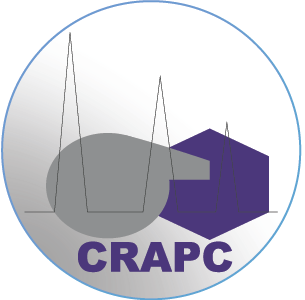- Oussama Baaloudj, Laboratory of Reaction Engineering, Faculty of Mechanical Engineering and Process Engineering USTHB, BP 32, Algiers, Algeria
- Noureddine Nasrallah, Laboratory of Reaction Engineering, Faculty of Mechanical Engineering and Process Engineering USTHB, BP 32, Algiers, Algeria
- Mohamed Kebir, Laboratory of Reaction Engineering, Faculty of Mechanical Engineering and Process Engineering USTHB, BP 32, Algiers, Algeria
- Research Unit on Analysis and Technological Development in Environment (URADTE-CRAPC), BP 384, Bou-Ismail Tipaza, Algeria
- Bouzid Guedioura, Reactor division, Nuclear Research Center, Draria, Algeria
- Abdeltif Amrane, Univ Rennes – ENSCR / UMR CNRS 6226 “Chemical Sciences of Rennes” ENSCR, Campus de Beaulieu, 11, allée de Beaulieu – CS 50837 – 35708 Rennes, 35708, Rennes, France
- Phuong Nguyen-Tri, Institute of Research and Development, Duy Tan University, Da Nang, 550000, Vietnam
- Université du Québec à Trois-Rivières (UQTR), Trois-Rivières, Québec, G9A 5H7, Canada
- Sonil Nanda & Aymen Amin Assadi Department of Chemical and Biological Engineering, University of Saskatchewan, Saskatoon, Saskatchewan, S7N 5A9, Canada
Received: 8 August 2020 /Accepted: 16 November 2020
© 2020 Springer Nature Switzerland AG. Part of Springer Nature
- Environmental Science and Pollution Research
Abstract
CoBi2O4 (CBO) nanoparticles were synthesized by sol-gel method using polyvinylpyrrolidone (PVP) as a complexing reagent. For a single phase with the spinel structure, the formed gel was dried and calcined at four temperatures stages. Various methods were used to identify and characterize the obtained spinel, such as X-ray diffraction (XRD), scanning electron micrograph (SEM-EDX), transmission electron microscope (TEM), Fourier transform infrared (FT-IR), X-ray fluorescence (XRF), Raman, and UV-Vis spectroscopies. The photocatalytic activity of CBO was examined for the degradation of a pharmaceutical product cefixime (CFX). Furthermore, for the prediction of the CFX degradation rate, an artificial neural network model was used. The network was trained using the experimental data obtained at different pH with different CBO doses and initial CFX concentrations. To optimize the network, various algorithms and transfer functions for the hidden layer were tested. By calculating the mean square error (MSE), 13 neurons were found to be the optimal number of neurons and produced the highest coefficient of correlation R2 of 99.6%. The relative significance of the input variables was calculated, and the most impacting input was proved to be the initial CFX concentration. The effects of some scavenging agents were also studied. The results confirmed the dominant role of hydroxyl radical OH• in the degradation process. With the novel CoBi2O4/ZnO hetero-system, the photocatalytic performance has been enhanced, giving an 80% degradation yield of CFX (10 mg/L) at neutral pH in only 3 h.
© 2020 Springer Nature Switzerland AG. Part of Springer Nature

